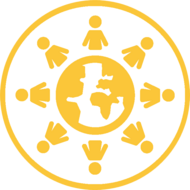From Freedom’s Shadow
(View Complete Item Description)Freedom for some meant slavery for others. The cruel irony of this nation’s founding and its “Temple of Liberty”—the U.S. Capitol—is that both were made possible by the enslavement of African Americans. The labor of enslaved and free blacks helped build the Capitol. An enslaved African American man helped to cast the Statue of Freedom, which was placed atop the Dome during the Civil War. Since the end of the Civil War, African Americans have struggled to move out of the shadows and into the Temple of Liberty as full participants. This the online version of a traveling exhibit by the U.S. Capitol Historical Society that depicts the journey of African Americans from slavery to freedom and political representation in the U.S. Capitol. The exhibit opened February 2006 in Baltimore, Maryland at the Reginald F. Lewis Museum of Maryland African American History and Culture.
Material Type: Interactive




















